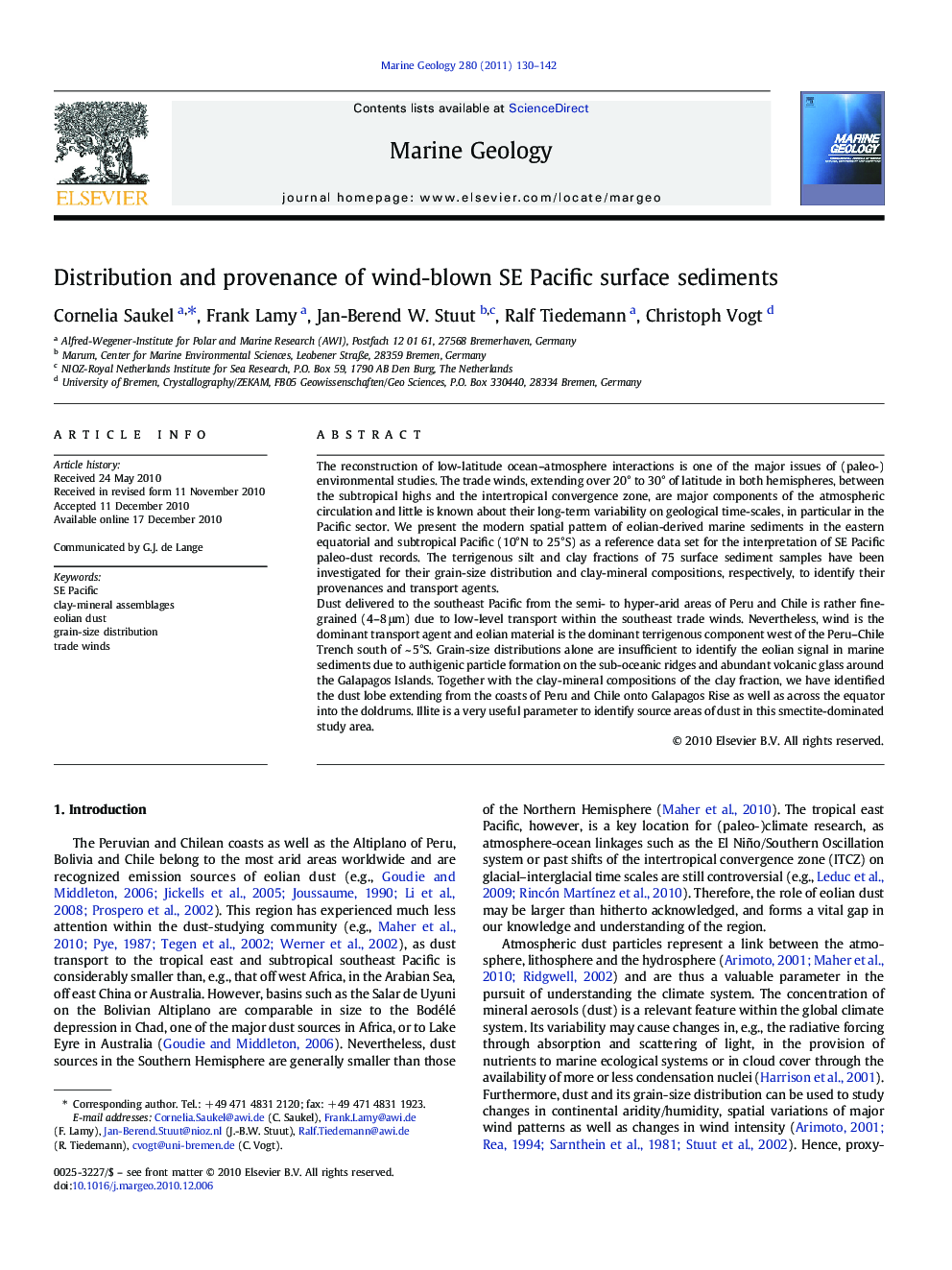| Article ID | Journal | Published Year | Pages | File Type |
|---|---|---|---|---|
| 6441857 | Marine Geology | 2011 | 13 Pages |
Abstract
Dust delivered to the southeast Pacific from the semi- to hyper-arid areas of Peru and Chile is rather fine-grained (4-8 μm) due to low-level transport within the southeast trade winds. Nevertheless, wind is the dominant transport agent and eolian material is the dominant terrigenous component west of the Peru-Chile Trench south of ~ 5°S. Grain-size distributions alone are insufficient to identify the eolian signal in marine sediments due to authigenic particle formation on the sub-oceanic ridges and abundant volcanic glass around the Galapagos Islands. Together with the clay-mineral compositions of the clay fraction, we have identified the dust lobe extending from the coasts of Peru and Chile onto Galapagos Rise as well as across the equator into the doldrums. Illite is a very useful parameter to identify source areas of dust in this smectite-dominated study area.
Related Topics
Physical Sciences and Engineering
Earth and Planetary Sciences
Geochemistry and Petrology
Authors
Cornelia Saukel, Frank Lamy, Jan-Berend W. Stuut, Ralf Tiedemann, Christoph Vogt,
